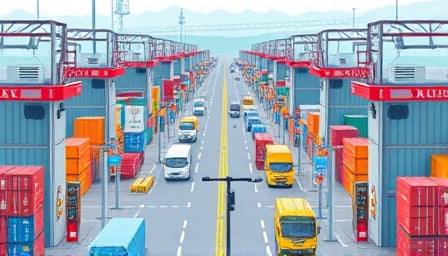Amazon.com Inc: A Year of Turbulence and Strategic Shifts
In a year marked by political tensions, strategic expansions, and significant sales events, Amazon.com Inc has navigated through a series of challenges and opportunities that have kept both investors and consumers on their toes. As the tech giant continues to dominate the e-commerce landscape, recent developments have sparked discussions on its future trajectory.
Political Tensions and Tariff Reversals
The relationship between Amazon and the U.S. government has seen its fair share of ups and downs. A notable incident involved Amazon’s decision to display the cost of Trump’s China tariffs at checkout, a move that was met with immediate backlash from the White House. President Trump’s direct intervention led to Amazon retracting its plan, highlighting the complex interplay between politics and business. This incident not only underscores the influence of political pressures on corporate decisions but also raises questions about the transparency and autonomy of major corporations in the face of governmental scrutiny.
Strategic Expansion in Missouri
On a more positive note, Amazon’s expansion in Missouri with a new 65,000-square-foot last-mile facility in Sedalia signifies its commitment to enhancing its logistics network. This move is part of Amazon’s broader strategy to improve delivery times and customer satisfaction. By investing in infrastructure, Amazon is not only bolstering its operational capabilities but also contributing to local economies, showcasing a blend of corporate growth and community support.
Impact on UPS and the Logistics Sector
The ripple effects of Amazon’s strategic decisions have been felt across the logistics sector, most notably by UPS. The shipping giant announced plans to lay off 20,000 workers and close 73 buildings, attributing these decisions to a reduction in business with Amazon and broader economic uncertainties. This development highlights the challenges faced by traditional logistics companies in adapting to the evolving demands of e-commerce giants like Amazon, which are increasingly investing in in-house delivery solutions.
Sales Events and Consumer Engagement
Despite the challenges, Amazon continues to engage consumers through significant sales events. The announcement of Amazon Prime Day 2025 for July and the Amazon Summer Sale, offering up to 45% off on top brands, are testament to Amazon’s ability to drive consumer interest and sales. These events not only boost Amazon’s revenue but also reinforce its position as a key player in the retail industry, capable of attracting a wide range of customers with diverse needs.
Conclusion
As Amazon navigates through political pressures, strategic expansions, and the evolving logistics landscape, its actions continue to have far-reaching implications for the retail and logistics sectors. The company’s ability to adapt to these challenges while maintaining its commitment to customer satisfaction and operational efficiency will be crucial in determining its future success. With its eyes set on further growth and innovation, Amazon’s journey in 2025 is one to watch closely.
